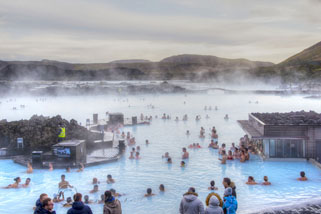Reykjavik, Iceland

click photo to enlarge

click photo to enlarge

click photo to enlarge


Reykjavik, Iceland |
see more on Flickr |
 click photo to enlarge |
Last year when we were flying home from Vietnam my wife said OK that is enough of Asia for a while. Why not some place like Norway or Iceland, so a few months later I told her I wanted to book a trip to Iceland in February. The 14 and 15 hour flights to Asia are hard to take. I told her the reality is the temperatures in southern Iceland are really not that cold in winter and while we were there it ranged from about 34 to 44 degrees F. See this link for yearly averages. One of the big tourist attractions is the Blue Lagoon and it must be booked in advance because most days of the year it is sold out. They only allow so many people in per hour. Our trip was booked through Gate1 and was the Hunt for the Northern Lights. I had wanted to see and photograph the Northern Lights and Iceland is one of the warmest places to see them. However, in order to see the lights you need a clear sky and the median cloud cover is 89% (mostly cloudy) and does not vary substantially over the course of the year. |
 click photo to enlarge |
Reykjavik is the northernmost capital city in the world at 64 degrees north latitude and has a population of around 130K. The population of Iceland itself is 330 k people so more then 1/3 of the countries population lives in the city. You can figure that on almost any given day you will see rain at some point. We enjoyed walking the city even if rainy cloud days do not make for the best photography. Almost everybody speaks English so we had no issues with that and we ate local foods on the trip which are seafood and lamb. We went out hunting the Northern Lights every night until we saw them on the 3rd night. Time spent in the Blue Lagoons was enjoyable and I was amazed at how many people took thier phones into the water to take selfies. I mean everything is all about selfies right. Iceland is volcanically and geographically active and they use these features for heat and electricity. They send hot water in pipes many miles to the city for heat. They use the hot water to heat greenhouses and steam generated electricity in many parts of the county come from geothermal activity. |
 click photo to enlarge |
  |